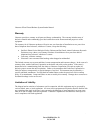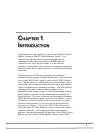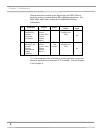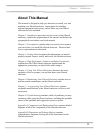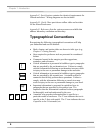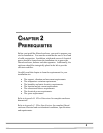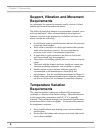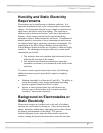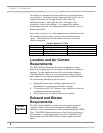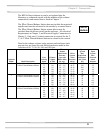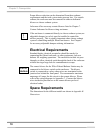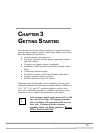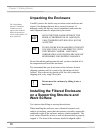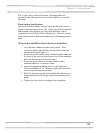
6
Chapter 2: Prerequisites
Support, Vibration and Movement
Requirements
At a minimum, the supporting structure usually consists of a base
cabinet and chemical-resistant work surface.
The ability for analytical balances to accommodate vibration varies
with type and brand. More advanced balances have improved
tolerance, however in the preparation of a balance enclosure site,
please consider the following:
• Avoid tubular stands or mobile benches that have the potential
of moving when touched.
• Work surfaces should be of a thick rigid material that remains
stable when buttons are pressed. An epoxy benchtop or
accessory work surface is a minimum requirement.
• A bench that is rigidly mounted to the floor or fixed to the
wall, but not both, may be appropriate.
• The corners of a building typically have less vibration than the
center.
• The bench with the balance enclosure should not contain any
vibration-producing equipment, such as shakers or pumps.
• Marble, granite or epoxy balance tables are generally
recommended by the manufacturers of analytical and
microbalances. (See the installation instructions in Chapter 3).
• Marble slabs with dampening pads placed within the enclosure
are also an effective low cost means of controlling vibration.
Temperature Variation
Requirements
The extent the balance readings are influenced by temperature
variations is a function of the balance design. Most manufacturers
would suggest that a temperature drift of 1-2°C is generally
tolerable. Only validation through your Operational Qualification
protocol can define what is acceptable. To minimize the potential
for temperature variations:
• Never install balances near heating sources such as radiators
and hot plates.
• Do not place the balance and enclosure on a bench that would
receive direct sunlight.



